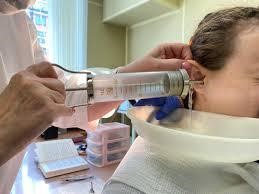Body Mass Index (BMI) is a widely-used measurement to determine your optimum body weight. It is essentially the relationship between your weight and height. The formula used to calculate it is:
BMI = (Weight in Pounds ÷ (Height in inches)²) × 703
Or, for you folks that use metric:
BMI = Weight in Kilograms ÷ (Height in meters)²
So, for yours truly (at 5’11” and 180 pounds), I’d use the following formula:
(180 ÷ 71²) × 703 = 25.1
Generally, BMI of 20–25 is considered healthy. A BMI of less than 20 suggests a person is underweight, 25–29 indicates overweight, and 30+ is a sign of obesity.
BMI provides a rough estimate of your body’s fat content. However, although research has confirmed a strong correlation between fat content and BMI, results may vary from group to group. For instance, athletes and bodybuilders may develop significantly higher muscle mass which contributes more to his or her overall weight than fat. As a result, their BMI may be high despite having a lower body fat percentage. Conversely, elderly people who may have lost muscle or bone mass could have a low BMI although their body fat percentage is significantly high.
Higher BMIs are linked with greater risk of disease and death. People with a BMI of 25–29 have higher risks of coronary heart disease, strokes, type 2 diabetes, hypertension, sleep apnea, and respiratory problems. Some cancers such as endometrial, breast, and colon cancers have also been linked to being overweight. The risks of these diseases and death are magnified many times over in the 30+ category. For those who are approaching their “golden years”, these risks only increase and it is important that consider your BMI in conjunction with a healthy age management routine that involves exercise and a proper diet.

However, BMI is just a potential indicator of health problems and should be used in conjunction with other indicators. For example, body shape has also been shown to be a predictor of the risk of disease. Fat concentrated around the abdominal area is considered less healthy than a similar mass of fat concentrated around the buttocks and hips (apple vs. pear). BMI also needs to be interpreted differently for different groups such as children, the elderly, and pregnant or nursing women.
Electrical impedance tests are more accurate means of measuring body fat than BMI could ever hope to be. However, an accurate measure typically involves a visit to a doctor or gym. Tanita scales have this capability at pretty reasonable prices. I own the BF679W model and get relatively accurate results for a personal device. It appears to vary by ½–1% when compared to the machine at the doctor’s office. For a one-time investment of $30–75, it’s a bargain compared to several doctor visits.
Despite its shortcomings, BMI still has the advantage of being an easy-to-calcluate indicator. As long as you understand its limitations (and adjust accordingly based on your particular body type), it can be extremely useful in monitoring your weight.




